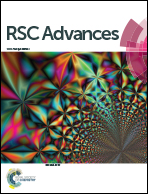Voltammetric analysis of nitroxoline in tablets and human serum using modified carbon paste electrodes incorporating mesoporous carbon or multiwalled carbon nanotubes
Abstract
Mesoporous carbon (MC) was synthesized using a mesoporous SiO2 template material (SBA-15) and sucrose as the carbon source. SBA-15, MC as well as commercially obtained multi-walled carbon nanotubes (MWCNTs) were characterized using X-ray diffraction (XRD), transmission electron microscopy (TEM), N2 sorption isotherms and electrochemical impedance spectra. A carbon paste (CP) electrode modified with either MC or MWCNTs was used as a sensor for sensitive and selective determination of the nitroxoline drug. Using cyclic voltammetry, linear sweep and square-wave adsorptive stripping voltammetry, nitroxoline was found to oxidize via one developed peak at MWCNT/CP and MC/CP electrodes compared to unmodified one. This is attributed to the stronger adsorptive character, lower charge transfer resistances and higher electrocatalytic activities of modified CP electrodes than the unmodified CP electrode. A well-defined peak and high current response were observed in a B–R universal buffer (pH 2.5) following preconcentration of nitroxoline by adsorption accumulation at −0.2 V (vs. Ag/AgCl/KCls). Limits of detection of 3.0 × 10−11, 1.5 × 10−11 and 3.0 × 10−12 M nitroxoline, were obtained using the unmodified CP, MWCNT/CP and MC/CP electrodes, respectively. The utility of these sensors was examined for the determination of nitroxoline in its pharmaceutical dosage form (Nibiol® tablets) and human serum.


 Please wait while we load your content...
Please wait while we load your content...